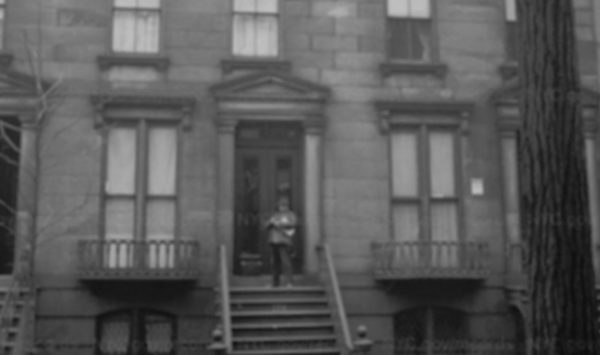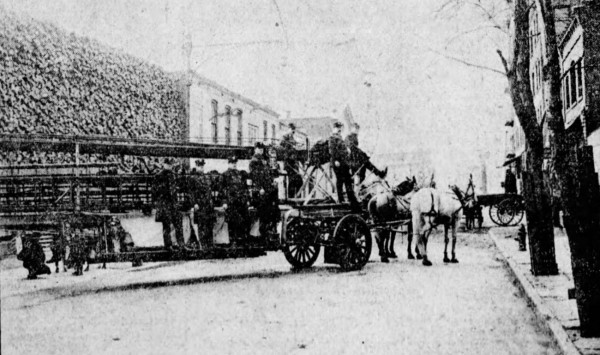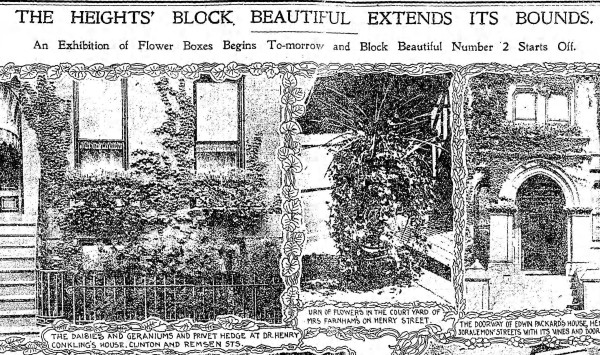HOW TO ABANDON A BROWNSTONE (1907)

******************************************************************************************************************************** Brownstone Detectives investigates the history of our clients’ homes. The story you are about to read was composed from research conducted in the course of one of those investigations. Do you know the history of YOUR house? ******************************************************************************************************************************** The house at No. 178 State Street in Brooklyn Heights once sat untouched for almost 20 years. Owned by a woman in a sanitarium who was unable to utilize the property, she made all of her heirs promise – in 1889 – never to enter the house until she was dead. Apparently, though, they kept up appearances well in her absence by putting “help wanted” notices in the paper, and advertising “furnished rooms” in the house. The woman in question, Mrs. Mary J. Cooke King, according to her obituary, had been a leader during the Civil War in “arranging for the great fair held in Brooklyn in aid of the sanitary commission.” After she “came out of mourning” two years after her husband’s death “it was found she had developed an eccentricity of character bordering on insanity.” She “discharged all her servants; she had the windows and doors to her home iron barred and she refused to receive visitors.” The following piece appeared in the Brooklyn Daily Eagle shortly after she died, noting that the place could finally be placed on the chopping block. Obviously, none of her family wanted it. The story read: “The ‘house of mystery,’ at 178 State street, which was entered on Monday of last week for […]
THE FIREMEN OF DOWNTOWN BROOKLYN (1905)

******************************************************************************************************************************** Brownstone Detectives investigates the history of our clients’ homes. The story you are about to read was composed from research conducted in the course of one of those investigations. Do you know the history of YOUR house? ******************************************************************************************************************************** “A Day With the Fire Fighters from Brooklyn” was a newspaper feature spread from 1905. The spread seems to have followed Truck 60, which was located at State and Smith Streets in what was, at the time, known as Downtown Brooklyn, and is now named Boerum Hill . Follow @BrownstoneDetec Share ———————————————————————————————————————– The Brownstone Detectives Brownstone Detectives is an historic property research agency. Our mission is to document and save the histories of our clients’ homes. From our research, we produce our celebrated House History Books and House History Reports. Contact us today to begin discovering the history of your home.
THE GREENEST BLOCK IN BROOKLYN (1902)

******************************************************************************************************************************** Brownstone Detectives investigates the history of our clients’ homes. The story you are about to read was composed from research conducted in the course of one of those investigations. Do you know the history of YOUR house? ******************************************************************************************************************************** As the judging for this year’s “Greenest Block in Brooklyn” award heads into its final round, we bring you a history of the concept of beautifying and greening neighborhoods in the borough of Brooklyn. A BRIEF HISTORY OF BLOCK BEAUTIFICATION IN BROOKLYN Before the Botanic Garden arrived on the scene with its “Greenest Block in Brooklyn” initiative in the 1990s, there was “Block Beautiful.” A number of private Brooklyn citizens, wishing to bring about the greening of their neighborhood, initiated an organized effort to stimulate an active interest in its residents utilizing their green thumbs to good effect. This earliest organized “block beautification” project began somewhat simultaneously in 1902 on two separate streets and section of the borough – Henry Street (in Brooklyn Heights) and on Quincy Street (in the Bedford Section). Led by Miss Zella Milhau of 291 Henry Street, the effort was called “Block Beautiful,” and was an initiative to “green” the block upon which she and her family lived, with the hope that this effort would be replicated throughout the city. Milhau, an artist and active member of the Municipal Art Society and the Fine Arts Club of Manhattan, who lived in the Columbia Heights section on Henry Street between Joralemon and State streets, originated the idea and got […]